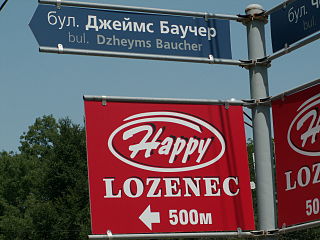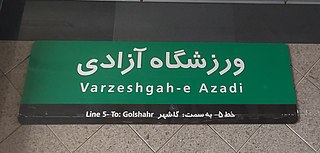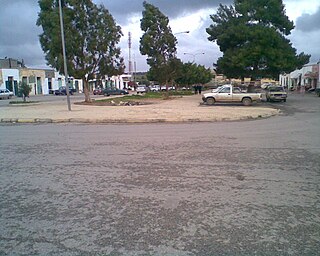
Arabic is a Central Semitic language of the Afroasiatic language family spoken primarily in the Arab world. The ISO assigns language codes to 32 varieties of Arabic, including its standard form of Literary Arabic, known as Modern Standard Arabic, which is derived from Classical Arabic. This distinction exists primarily among Western linguists; Arabic speakers themselves generally do not distinguish between Modern Standard Arabic and Classical Arabic, but rather refer to both as al-ʿarabiyyatu l-fuṣḥā or simply al-fuṣḥā (اَلْفُصْحَىٰ).

The Arabic alphabet, or Arabic abjad, is the Arabic script as specifically codified for writing the Arabic language. It is written from right-to-left in a cursive style, and includes 28 letters, of which most have contextual letterforms. The Arabic alphabet is considered an abjad, with only consonants required to be written; due to its optional use of diacritics to notate vowels, it is considered an impure abjad.
Transliteration is a type of conversion of a text from one script to another that involves swapping letters in predictable ways, such as Greek ⟨α⟩ → ⟨a⟩, Cyrillic ⟨д⟩ → ⟨d⟩, Greek ⟨χ⟩ → the digraph ⟨ch⟩, Armenian ⟨ն⟩ → ⟨n⟩ or Latin ⟨æ⟩ → ⟨ae⟩.

In linguistics, romanization is the conversion of text from a different writing system to the Roman (Latin) script, or a system for doing so. Methods of romanization include transliteration, for representing written text, and transcription, for representing the spoken word, and combinations of both. Transcription methods can be subdivided into phonemic transcription, which records the phonemes or units of semantic meaning in speech, and more strict phonetic transcription, which records speech sounds with precision.

Postal romanization was a system of transliterating place names in China developed by postal authorities in the late 19th and early 20th centuries. For many cities, the corresponding postal romanization was the most common English-language form of the city's name from the 1890s until the 1980s, when postal romanization was replaced by pinyin, but the system remained in place on Taiwan until 2002.

In Libya there are currently 106 districts, second level administrative subdivisions known in Arabic as baladiyat. The number has varied since 2013 between 99 and 108. The first level administrative divisions in Libya are currently the governorates (muhafazat), which have yet to be formally delineated, but which were originally tripartite as: Tripolitania in the northwest, Cyrenaica in the east, and Fezzan in the southwest; and later divided into ten governorates.

Adyghe is a Northwest Caucasian language spoken by the western subgroups of Circassians. It is spoken mainly in Russia, as well as in Turkey, Jordan, Syria and Israel, where Circassians settled after the Circassian genocide by the Russian Empire. It is closely related to the Kabardian language, though some reject the distinction between the two languages in favor of both being dialects of a unitary Circassian language.

The Hebrew language uses the Hebrew alphabet with optional vowel diacritics. The romanization of Hebrew is the use of the Latin alphabet to transliterate Hebrew words.
Romanization of Greek is the transliteration (letter-mapping) or transcription (sound-mapping) of text from the Greek alphabet into the Latin alphabet.

Romanization of Bulgarian is the practice of transliteration of text in Bulgarian from its conventional Cyrillic orthography into the Latin alphabet. Romanization can be used for various purposes, such as rendering of proper names and place names in foreign-language contexts, or for informal writing of Bulgarian in environments where Cyrillic is not easily available. Official use of romanization by Bulgarian authorities is found, for instance, in identity documents and in road signage. Several different standards of transliteration exist, one of which was chosen and made mandatory for common use by the Bulgarian authorities in a law of 2009.

The romanization of Arabic is the systematic rendering of written and spoken Arabic in the Latin script. Romanized Arabic is used for various purposes, among them transcription of names and titles, cataloging Arabic language works, language education when used instead of or alongside the Arabic script, and representation of the language in scientific publications by linguists. These formal systems, which often make use of diacritics and non-standard Latin characters and are used in academic settings or for the benefit of non-speakers, contrast with informal means of written communication used by speakers such as the Latin-based Arabic chat alphabet.
The Arabic chat alphabet, Arabizi, Arabeezi, Arabish, Franco-Arabic or simply Franco refer to the romanized alphabets for informal Arabic dialects in which Arabic script is transcribed or encoded into a combination of Latin script and Arabic numerals. These informal chat alphabets were originally used primarily by youth in the Arab world in very informal settings—especially for communicating over the Internet or for sending messages via cellular phones—though use is not necessarily restricted by age anymore and these chat alphabets have been used in other media such as advertising.
Libyan Arabic, also called Sulaimitian Arabic by scholars, is a variety of Arabic spoken in Libya, and neighboring countries. It can be divided into two major dialect areas; the eastern centred in Benghazi and Bayda, and the western centred in Tripoli and Misrata. The Eastern variety extends beyond the borders to the east and share the same dialect with far Western Egypt, Western Egyptian Bedawi Arabic, with between 90,000 and 474,000 speakers in Egypt. A distinctive southern variety, centered on Sabha, also exists and is more akin to the western variety. Another Southern dialect is also shared along the borders with Niger with 12,900 speakers in Niger as of 2021.
Ṯāʾ (ث) is one of the six letters the Arabic alphabet added to the twenty-two from the Phoenician alphabet. In Modern Standard Arabic it represents the voiceless dental fricative, also found in English as the "th" in words such as "thank" and "thin". In Persian, Urdu, and Kurdish it is pronounced as s as in "sister" in English. Ṯāʾ, along those with the letter shīn, are the only two surviving Arabic letters with three dots above. In most European languages, it is mostly romanized as the digraph th. In other languages, such as Indonesian, this Arabic letter is often romanized as ts and Ṡ.

The Latin script, also known as the Roman script, is a writing system based on the letters of the classical Latin alphabet, derived from a form of the Greek alphabet which was in use in the ancient Greek city of Cumae in Magna Graecia. The Greek alphabet was altered by the Etruscans, and subsequently their alphabet was altered by the Ancient Romans. Several Latin-script alphabets exist, which differ in graphemes, collation and phonetic values from the classical Latin alphabet.
Musaid or Imsaad is a town in Butnan District in eastern Libya. Alternates names include: Oistant, Msa'ed, Imsa'ed, and Musa'ed. Musaid lies approximately 150 kilometres east of Tobruk and is the major border crossing between Libya and Egypt.

Romanization or Latinization of Persian is the representation of the Persian language with the Latin script. Several different romanization schemes exist, each with its own set of rules driven by its own set of ideological goals.

This is a list of foreign ministers of Libya.

Massa is a town in the District of Jebel el-Akhdar in north-eastern Libya. It is located 10 km west of Beida. During Italian rule, the town was known as VillaggioLuigi Razza, probably after the late Italian politician of the same name.

The Libyan Coastal Highway, formerly the Litoranea Balbo, is a highway that is the only major road that runs along the entire east-west length of the Libyan Mediterranean coastline. It is a section in the Cairo–Dakar Highway #1 in the Trans-African Highway system of the African Union, Arab Maghreb Union and others.














